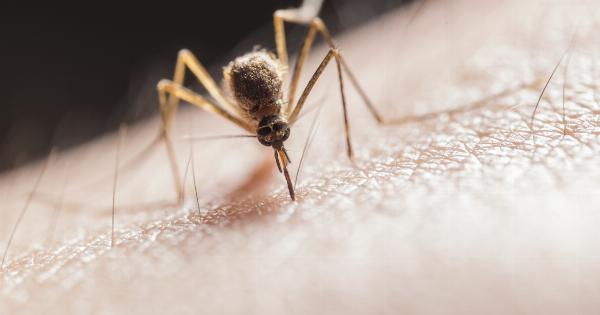Fleas are tiny, blood-sucking parasites that infest our furry friends and can make our lives absolutely miserable. These pesky critters not only cause severe discomfort for our pets but also pose a potential threat to our own health.
In this comprehensive guide, we will explore the fascinating world of fleas, their life cycle, the problems they can cause, and effective ways to get rid of them.
What are Fleas?
Fleas are wingless insects that belong to the order Siphonaptera. There are over 2,500 known species of fleas, and they can be found worldwide.
These small, agile parasites possess highly specialized mouthparts that allow them to extract blood from their hosts. Fleas are incredibly resilient and can survive in various environments, making them a persistent nuisance to both animals and humans.
Life Cycle of Fleas
To effectively combat fleas, it is crucial to understand their life cycle. Fleas undergo complete metamorphosis, which consists of four stages: egg, larva, pupa, and adult.
Egg Stage
The female flea lays her eggs on the host animal, but they quickly fall off into the surrounding environment. This is why a flea infestation is not limited to just the pet’s fur. Flea eggs are tiny, white, and barely visible to the naked eye.
They hatch within 1-12 days, depending on environmental conditions.
Larva Stage
Once the eggs hatch, the resulting larvae emerge. Flea larvae resemble small, whitish worms and are blind. They survive by feeding on organic matter such as flea feces and other debris present in their environment.
Flea larvae avoid sunlight and prefer dark, humid areas like carpets, bedding, and cracks in the floor. This stage typically lasts for 5-11 days.
Pupa Stage
In the pupa stage, flea larvae spin a cocoon and enter a dormant state. This cocoon is sticky, serving as protection against potential threats. The pupa stage can last anywhere from 5 days to several months, depending on environmental conditions.
It is important to note that fleas in the pupa stage are highly resistant to insecticides, making them notoriously challenging to eradicate.
Adult Stage
Once the pupa is fully developed, a mature flea emerges. It typically takes 1-2 weeks for an adult flea to emerge from its cocoon, but this period can be as short as a few days or as long as several months.
Adult fleas are known for their exceptional jumping ability and their insatiable appetite for blood.
The Problems Fleas Cause
Fleas not only irritate our pets but can also pose significant health risks to both animals and humans:.
1. Skin Irritation and Allergic Reactions
Flea bites can cause intense itching and discomfort. Some animals are hypersensitive to flea saliva, leading to an allergic reaction known as flea allergy dermatitis (FAD).
FAD can cause hair loss, skin infections, and secondary bacterial infections if left untreated.
2. Anemia
In severe infestations, particularly in young or small animals, fleas can cause anemia. Fleas consume a substantial amount of blood compared to their body size, leading to a decrease in red blood cell count and oxygen-carrying capacity.
3. Transmission of Diseases
Fleas are notorious carriers of various diseases. The most well-known disease transmitted by fleas is the bubonic plague, infamous for causing devastating pandemics in the past.
Other diseases, such as cat scratch disease, murine typhus, and tapeworm infections, can also be transmitted through flea bites.
4. Psychological Distress
The constant itching and biting caused by fleas can lead to behavioral changes in pets, including restlessness, aggression, and anxiety.
Effective Flea Control Methods
Now that we are aware of the problems fleas can cause, let’s explore some effective methods to control and eliminate these pesky parasites:.
1. Regular Pet Grooming
Regular grooming and bathing of pets can help remove fleas and their eggs. Use a flea comb to comb through your pet’s fur, paying close attention to areas such as the neck, tail base, and armpits.
This method may not completely eradicate fleas but can significantly reduce their population.
2. Flea Shampoos
Flea shampoos are specially formulated to kill adult fleas on contact. However, they offer minimal residual protection, meaning they are less effective against flea eggs and larvae.
Flea shampoos can be a useful addition to a comprehensive flea control regimen.
3. Spot-on Treatments
Spot-on treatments, applied directly to your pet’s skin between the shoulder blades, are highly effective against fleas.
These treatments contain insecticides that kill adult fleas as well as disrupt the flea life cycle by preventing eggs from hatching or larvae from developing into adults.
4. Oral Medications
Oral flea medications are available for both cats and dogs. These medications work by entering the bloodstream and preventing fleas from reproducing or by killing adult fleas.
Consult with your veterinarian to determine the most suitable oral medication for your pet.
5. Environmental Control
Since only a small portion of the flea population resides on your pet, thorough environmental control is essential. Vacuum carpets, upholstery, and pet bedding regularly. Wash your pet’s bedding in hot water to kill any fleas or eggs.
Use flea sprays or foggers to treat your home, focusing on areas where fleas are likely to hide.
6. Professional Pest Control
In severe infestations, professional pest control may be necessary. Pest control companies employ specialized methods and insecticides to eradicate fleas effectively. However, this option should be considered only after exhausting all other methods.
7. Prevention
Preventing flea infestations is always better than treating them. Use preventive measures such as year-round flea control products, keeping your pets away from stray animals, and regularly cleaning and maintaining your home.
Fleas and Human Health
Fleas not only target our furry friends but can also affect human health. Although humans are not the preferred hosts for fleas, they can be an unfortunate victim of their bites. Fleas can transmit diseases to humans, including:.
1. Murine Typhus
Murine typhus is a bacterial infection transmitted by fleas that infest rats. Symptoms include fever, headache, muscle aches, and a rash. While generally mild, severe cases can occur in individuals with weakened immune systems.
2. Cat Scratch Disease
Cat scratch disease is caused by a bacterium called Bartonella henselae, which can be transmitted to humans through flea bites. As the name suggests, cat scratches or bites are also common modes of transmission.
The disease presents as swollen lymph nodes, fever, fatigue, and occasionally complications affecting the heart or brain.
3. Tapeworm Infections
Fleas often harbor tapeworm larvae, which can infect humans who accidentally swallow an infected flea. Tapeworm infections can cause digestive issues, abdominal pain, weight loss, and other symptoms.
Conclusion
Fleas may be tiny, but the problems they can cause are anything but insignificant. Understanding the life cycle, problems associated with flea infestations, and effective control methods is crucial in our battle against these pesky parasites.
By implementing comprehensive flea control measures and staying vigilant, we can keep our pets and ourselves safe from the bloodthirsty nuisances known as fleas.































